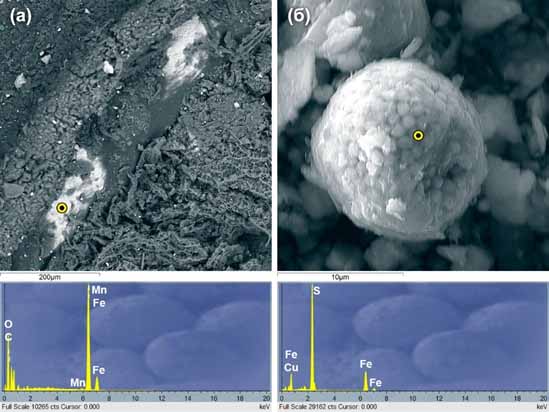Geochemistry of peatland water in the holocene sequence of the Bolshoy Ubinsky ryam (Baraba forest-steppe)
DOI:
https://doi.org/10.31251/pos.v8i4.332Keywords:
peatland waters; ryam; geochemistry; dissolved organic matter; microelements; authigenic Fe minerals; Baraba forest-steppe.Abstract
The aim of the study was to investigate the chemical composition and formation patterns of peatland water in the Bolshoy Ubinsky Ryam during the Holocene.
Location and time of the study. The study focused on peatland water from the Bolshoy Ubinsky Ryam, located in the forest-steppe zone in the south of West Siberia, at the southern boundary of the Baraba Lowland. Water sampling was conducted in September 2024.
Methods. The ionic composition of peatland water was determined using titrimetry, capillary electrophoresis, and photometry. Concentrations of Ca, Mg, Na, K, Al, Fe, Si, As, Cr, Cu, Pb, Zn, B, Mn, Sr, and Sb were measured by inductively coupled plasma atomic emission spectrometry (ICP-AES). Concentrations of dissolved organic carbon (DOC) and dissolved nitrogen (DN) were determined using a Multi N/C 2100S analyzer. Authigenic iron minerals were detected using a TESCAN MIRA 3 LMU scanning electron microscope equipped with microanalysis systems.
Results. For the first time, the chemical composition of peatland water throughout the sequence of peat deposits was obtained for the Bolshoy Ubinsky Ryam. The concentration of most major ions and chemical elements decreased from the fen peat types to transitional and bog peats, the latter receiving their hydro-mineral nutrition solely by atmospheric aerosols and the ash fraction after mineralization of plant biomass. The proximity of the underlying bedrock, reducing environmental conditions, as well as the dissolution of certain minerals and filtration of groundwater through the basal horizon of the peat deposit, led to the increased concentrations of Cl–, Ca²⁺, Mg²⁺, Si, B, Mn, and Sr in the waters of fen peats. Compared to fen and transitional peats, the water of bog peats exhibited higher contents of Al, Fe, and Sb. A down-profile shift in the associations of authigenic iron mineral phases was observed: bog peats were characterized by the prevalence of oxides and hydroxides, whereas the fen part of the peat deposit was characterized by the presence of Fe sulfides (pyrite).
Conclusions. The obtained data convincingly demonstrate that the vertical geochemical zonation of peatland waters is directly determined by the genetic type of peat and the lithology of the underlying mineral deposits.
Downloads

Downloads
Published
How to Cite
Issue
Section
License
Copyright (c) 2025 The Journal of Soils and Environment

This work is licensed under a Creative Commons Attribution 4.0 International License.






